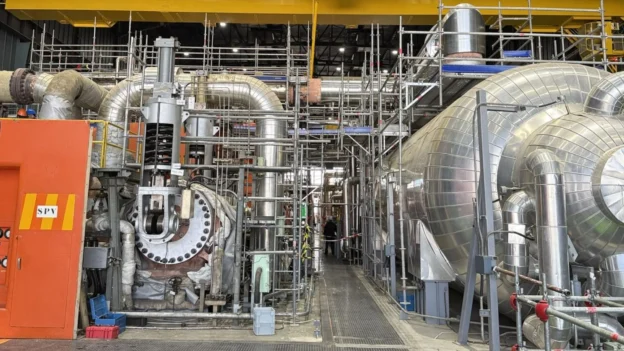Unit 2 of the Almaraz nuclear power plant has been reconnected to the national electricity system this November 13th, registering the start of its thirtieth operating cycle. This restart comes after completing the refueling process number 29, carried out without labor incidents and with the participation of more than a thousand specialized workers.
Almaraz nuclear power plant process under strict control
During this scheduled shutdown, 56 fuel assemblies were replaced and maintenance work was performed on critical equipment, including one of the low pressure turbines and the reactor cooling pump seals. In addition, the power supply system from the Alcántara hydroelectric power plant was Alcántara hydroelectric power plant, ensuring the required energy redundancy.hydroelectric plant, ensuring the energy redundancy required by regulatory protocols.
On October 30, the managers of CNAT (Centrales Nucleares Almaraz-Trillo, A.I.E.) agreed to request the Ministry for Ecological Transition to extend the operation of the two groups until June 2030. The request is based on the fulfillment of the criteria established by the Nuclear Safety Council(CSN) and on the level 1 of excellence granted by WANO.
The Almaraz nuclear power plant accounts for more than 7% of the country’s electricity supply, a figure equivalent to the consumption of four million homes. With a human team of 4,000 people and the support of some 70 collaborating companies, its economic and labor influence in the region is decisive. Each annual recharge injects highly qualified temporary employment and maintains a sustained investment of 50 million euros in technological improvements.
The plant undergoes periodic audits to ensure its compliance with international safety standards. The operations performed during this refueling reaffirm its commitment to technical excellence, validating its ability to continue operating with guarantees. However, in comparison with similar facilities such as the North Anna plant in Virginia, it demonstrates its long-term viability.
Source and photo: CNAT

